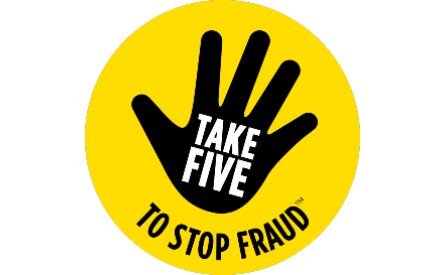- Malware is malicious software used to infect or access your computer, including viruses, trojans, spyware, ransomware and more.
- Fraudsters often pretend to be well-known organisations and ask you to click a malicious link or open an attachment. Your computer may be infected by following a link, downloading online attachments or opening an attachment in a phishing email.
- Once activated, malware can redirect you to bogus screens, and display prompts and warning messages designed to persuade you to enter security information.
- Ransomware can take control and encrypt your files and demand a ransom to release them and restore your data.
- Once infected, your device is likely to run slowly as the malicious software works to intercept data, particularly when you’re logging in to your online accounts.
Overlay

Take Five to stop fraud
Take Five is a national campaign that offers straight-forward and impartial advice to help everyone protect themselves from preventable financial fraud. This includes email deception and phone-based scams as well as online fraud – particularly where criminals impersonate trusted organisations.
